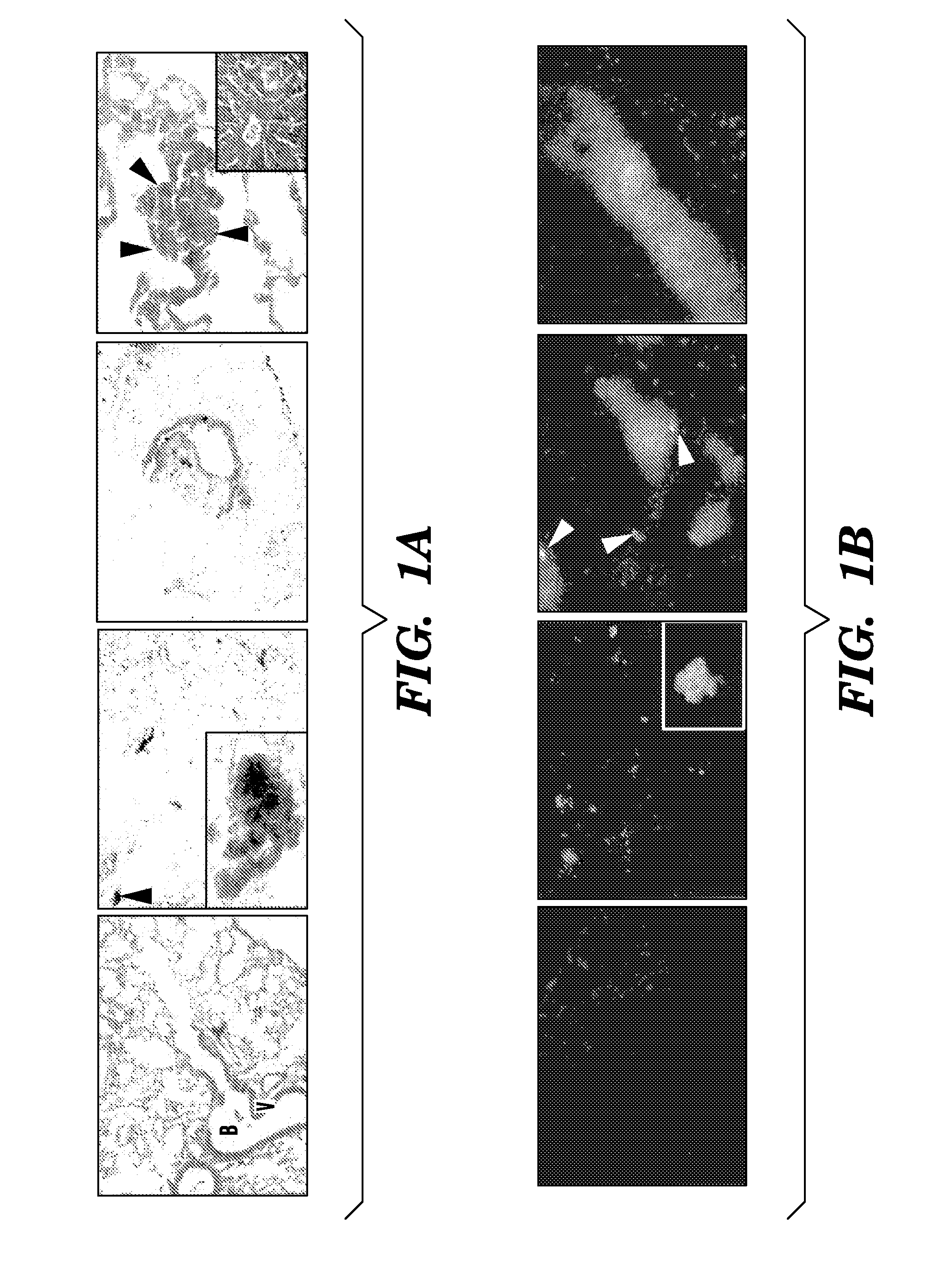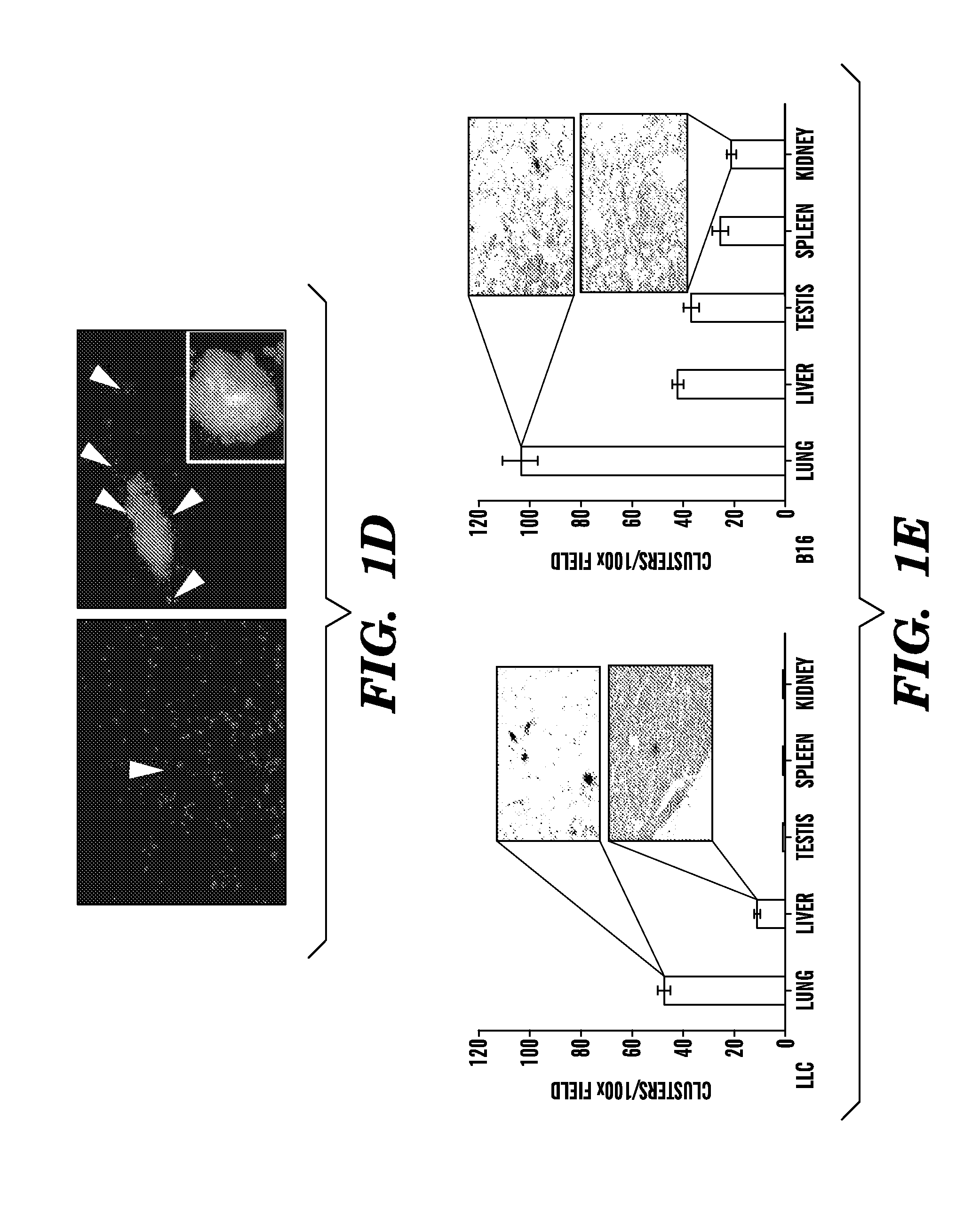Use of vascular endothelial growth factor receptor 1+ cells in treating and monitoring cancer and in screening for chemotherapeutics
a technology of vascular endothelial growth factor and vascular endothelial cells, which is applied in the direction of antibody medical ingredients, drug compositions, instruments, etc., can solve the problem that none of these studies have shown whether the expression of vegf is associated with parallel surface vegfr2/, and achieve the effect of preventing tumor spread and enhancing tumor cell migration
- Summary
- Abstract
- Description
- Claims
- Application Information
AI Technical Summary
Benefits of technology
Problems solved by technology
Method used
Image
Examples
example 1
Bone Marrow BM Transplantation
[0087]Wild-type C57B1 / 6 mice were lethally irradiated (950 rads) and transplanted with 1×106 β-galactosidase+ or GFP+ BM cells (Rosa-26 mice) (Lyden et al., “Impaired Recruitment of Bone-marrow-derived Endothelial and Hematopoietic Precursor Cells Blocks Tumor Angiogenesis and Growth,”Nat. Med. 7:1194-1201 (2001), which is hereby incorporated by reference in its entirety). After 4 weeks, mice were injected intradermally with either 2×106 LLC (ATCC) or B-16 cells (ATCC).
example 2
β-Galactosidase Staining
[0088]Tissues and femoral bones were fixed in 4% paraformaldehyde (PFA) for 4 h. The samples were stained in X-gal solution at 37° C. for 36 hours, as described in Tam et al., “The Allocation of Epiblast Cells to the Embryonic Heart and other Mesodermal Lineages The Role of Ingression and Tissue Movement during Gastrulation,”Development. 124:1631-1642 (1999), which is hereby incorporated by reference in its entirety. The X-gal stained tumors and BM were embedded as described in Lyden et al., “Impaired Recruitment of Bone-marrow-derived Endothelial and Hematopoietic Precursor Cells Blocks Tumor Angiogenesis and Growth,”Nat. Med. 7:1194-1201 (2001), which is hereby incorporated by reference in its entirety.
example 3
Fluorescent Tumor Transfection
[0089]B16 and LLC cells (2×105) were plated 24 hours prior to transfection. Cells were then pelleted and resuspended into serum free media with lentiviral vector supernatant containing the DsRed reporter gene or GFP gene. Concentrated viral constructs with titers of 1-2×108 infectious particles per ml were used to infect 2×106 cells in a 1 ml (multiplicity of infection is 50) as previously described. Flow cytometric analysis was performed to confirm degree of fluorescence. C57B1 / 6 mice were inoculated with 2×106 LLC / GFP+ or B16 / DsRed+ cells.
PUM
 Login to View More
Login to View More Abstract
Description
Claims
Application Information
 Login to View More
Login to View More - R&D
- Intellectual Property
- Life Sciences
- Materials
- Tech Scout
- Unparalleled Data Quality
- Higher Quality Content
- 60% Fewer Hallucinations
Browse by: Latest US Patents, China's latest patents, Technical Efficacy Thesaurus, Application Domain, Technology Topic, Popular Technical Reports.
© 2025 PatSnap. All rights reserved.Legal|Privacy policy|Modern Slavery Act Transparency Statement|Sitemap|About US| Contact US: help@patsnap.com



